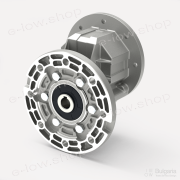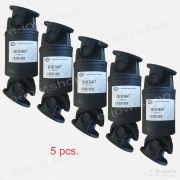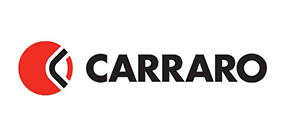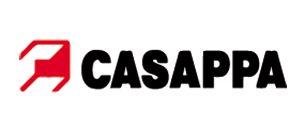Date: 08 Oct 2020
IP Rated Enclosures Explained
What is an IP rating?
IP (or "Ingress Protection") ratings are defined in international standard EN 60529 (British BS EN 60529:1992, European IEC 60509:1989). They are used to define levels of sealing effectiveness of electrical enclosures against intrusion from foreign bodies (tools, dirt, etc) and moisture.
What do the numbers in an IP Rating mean?
The numbers that follow IP each have a specific meaning. The first indicates the degree of protection (of people) from moving parts, as well as the protection of enclosed equipment from foreign bodies. The second defines the protection level that the enclosure enjoys from various forms of moisture (drips, sprays, submersion, etc). The tables below should help make sense of it:
IP Ratings - what they mean.
- No special protection. Not rated (or no rating supplied) for protection against ingress of this type.
- Protection from a large part of the body such as a hand (but no protection from deliberate access); from solid objects greater than 50mm in diameter.
- Protection against fingers or other objects not greater than 80mm in length and 12mm in diameter (accidental finger contact).
- Protection from entry by tools, wires, etc, with a diameter of 2.5 mm or more.
- Protection against solid objects larger than 1mm (wires, nails, screws, larger insects, and other potentially invasive small objects such as tools/small, etc).
- Partial protection against dust that may harm equipment.
- Totally dust-tight. Full protection against dust and other particulates, including a vacuum seal, tested against continuous airflow.
Second Digit (moisture protection)
- (or X - see the section below): No protection.
- Protection against vertically falling droplets, such as condensation. ensuring that no damage or interrupted functioning of components will be incurred when an item is upright.
- Protection against water droplets deflected up to 15° from vertical
- Protected against spray up to 60° from vertical.
- Protected against water splashes from all directions. Tested for a minimum of 10 minutes with an oscillating spray (limited ingress permitted with no harmful effects).
- Protection against low-pressure jets (6.3 mm) of directed water from any angle (limited ingress permitted with no harmful effects).
- Protection against direct high-pressure jets.
- Protection against full immersion for up to 30 minutes at depths between 15 cm and 1 meter (limited ingress permitted with no harmful effects).
- Protection against extended immersion under higher pressure (i.e. greater depths). Precise parameters of this test will be set and advertised by the manufacturer and may include additional factors such as temperature fluctuations and flow rates, depending on equipment type.
- (K): Protection against high-pressure, high-temperature jet sprays, wash-downs, or steam-cleaning procedures - this rating is most often seen in specific road vehicle applications (standard ISO 20653:2013 Road Vehicles - Degrees of protection).
Practical guidelines:
When working with gear units, it must always be taken into account whether the selected combination is suitable for operation in the conditions of the respective surrounding environment. In order to have a clear idea of whether the gear motor is suitable for the environment, we will have to compare its IP protection with the corresponding processes occurring or caused near it. IP protection is a term denoting the degree of protection of a component from environmental influences and more precisely protection against penetration of solid particles or fluids into the housing of the part. Penetration of external elements may result in damage to the device or complete damage to it, as well as injury to nearby people.
In some cases, if the object has only one type of protection, the letter X is used to replace the other type. For example, IPX4 means that there is no protection against particulate matter and the degree of moisture resistance is 4. Or another example - IP5X means that there is a degree of protection against penetration of particulate matter and there is no complete protection against moisture.
For some everyday objects, it is crucial to have such protection to some extent in order to be able to perform their functions reliably and safely. For example, in navigation, special protection against immersion in water is needed. In the agricultural sector, increased protection against the ingress of dust particles is often required.
| First digit | Meaning | Second digit | Meaning |
|---|---|---|---|
| 0 | No protection against accidental contact and penetration of solids | 0 | No protection against water penetration |
| 1 | Protection against touch by hand and penetration of solids with a diameter> 50 mm | 1 | Protection against vertically falling drops |
| 2 | Protection against touch with fingers and penetration of solids with a diameter> 12 mm | 2 | Protection against water splashes at an angle of 15 degrees |
| 3 | Protection against tools, wires, or similar objects with a diameter> 2.5 mm, protection against solids with a diameter> 2.5 mm | 3 | Protection against water splashes at an angle of 60 degrees |
| 4 | Protection against tools, wires, or similar objects with a diameter> 2.5 mm, protection against solids with a diameter> 1 mm | 4 | Protection against water splashes in all directions |
| 5 | Complete protection against contact, protection against penetration of dust that can disrupt the normal operation | 5 | Protection against water jets in all directions |
| 6 | Complete protection against dust penetration | 6 | Protection against water penetration in strong jets |
| 7 | Protection against water penetration during temporary immersion | ||
| 8 | Protection against water penetration during prolonged immersion, subject to the exact conditions defined by the manufacturer |


















































Post comment